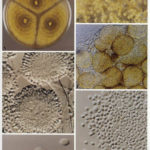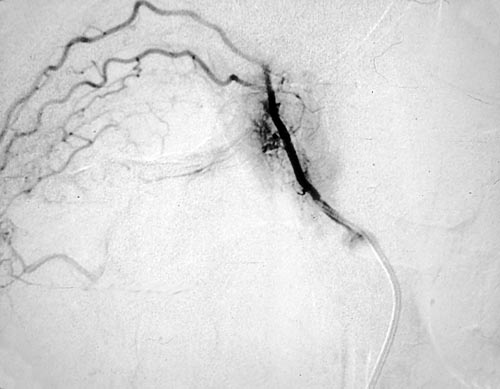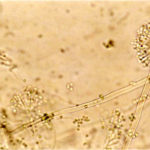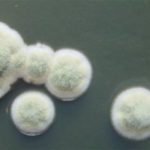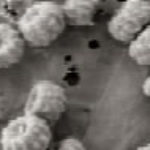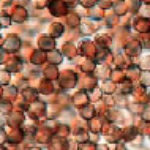Date: 26 November 2013
Copyright: n/a
Notes:
An angiogram is used to check the structure of blood vessels and detect narrowing, blockages or aneurysms that could affect organs such as the heart, brain or kidneys. During an angiogram, the patient is injected with a dye and then imaged with an X-ray or a CT scan. It usually takes 0.5 – 2 hours and doesn’t require general anaesthetic.
This angiogram shows the right posterior intercostal (between-the-ribs) artery. The dark dye shows that the artery is dilated (widened).
Read more about angiograms at NHS Choices
Images library
-
Title
Legend
-
Pigmentation of Aspergillus versicolor colonies ranged from pale green to greenish-beige, pink-green, dark green and brown. Reverse is usually reddish. The growth rate is usually slow. Cultured on Sabouraud dextrose agar with chloramphenicol.
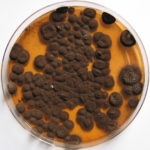
-
A Colonies on MEA after one week; B, C conidial heads with tip of conidiophire, x920; D conidial head, x 2330; E conidial heads x920
![aspvers[2] aspvers2](https://www.aspergillus.org.uk/wp-content/uploads/2017/10/aspvers2-150x150.jpg)
-
A Colonies on MEA + 20% sucrose after one week; B detail of colony showing columnar conidial heads x 44 ; C conidial heads x 920; D conidia x2330
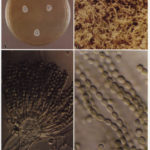
-
Cultures are grown on malt extract agar for 5-7 days at 30°C.
Light microscopy-1000x stained with lacto-phenol and cotton blue.
-
A Colonies on MEA +20% sucrose after one week; B ascomata x 40; C conidiophores x 920; D ascospores x2330; E ascoma x 230; F portion of ascoma with asci and ascospores, x 920.
